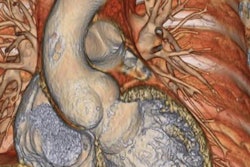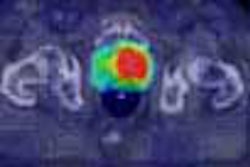Cardiac MRI appears to be more effective than conventional diagnostic procedures such as nuclear stress testing and coronary angiography in diagnosing women with symptoms of ischemic heart disease, according to research presented at the American College of Cardiology meeting this week.
In the study, presented by heart specialists from Allegheny General Hospital in Pittsburgh, cardiac MRI identified evidence of heart disease in women for whom
conventional testing indicated otherwise. Conducted jointly with the University of Alabama at Birmingham (UAB), the study is part of the Women’s Ischemia Syndrome Evaluation (WISE) study, a National Heart, Lung and Blood Institute-sponsored project aimed at improving coronary artery disease detection and treatment in women.
In the AGH-UAB study, 133 women with symptoms of ischemic heart disease underwent MRI and SPECT imaging while at rest and then after receiving medications that increase the heart rate. The researchers used perfusion indices to assess the presence of regional ischemia or scarring, and the indices were also averaged to generate a global myocardial perfusion status. Results were also compared to angiography.
The MRI and SPECT data were assessed in a blinded manner to categorize patients as having a regional ischemia or scarring, while the MRI data were used to categorize patients as having a global myocardial perfusion in the lower 25th percentile, the researchers said. Participants were then followed for three to four years to monitor the occurrence of heart attack or all-cause death.
At follow-up, 10 patients (7%) either died or had a heart attack. A low MR global myocardial perfusion status was associated with a seven-fold increase in risk of death or heart attack (21% event rate compared with 3% event rate for those with high global myocardial perfusion).
The MRI test performed under resting conditions provided these results, which the researchers said may eliminate the need in future studies to stress patients for a cardiac examination, according to the researchers. The risk assessment improved when the results of coronary artery angiography were included, the researchers noted.
By AuntMinnie.com staff writersMarch 8, 2004
Related Reading
Cardiac MRI tracks impact of statin therapy on plaque, March 7, 2004
New MRI approach may differentiate beta-blocker candidates with Marfan syndrome, March 2, 2004
Myocardial perfusion measured by MRI useful in detecting heart disease, August 4, 2003
Transesophageal MRI improves evaluation of aortic plaque, April 4, 2003
Copyright © 2004 AuntMinnie.com


.fFmgij6Hin.png?auto=compress%2Cformat&fit=crop&h=100&q=70&w=100)





.fFmgij6Hin.png?auto=compress%2Cformat&fit=crop&h=167&q=70&w=250)











